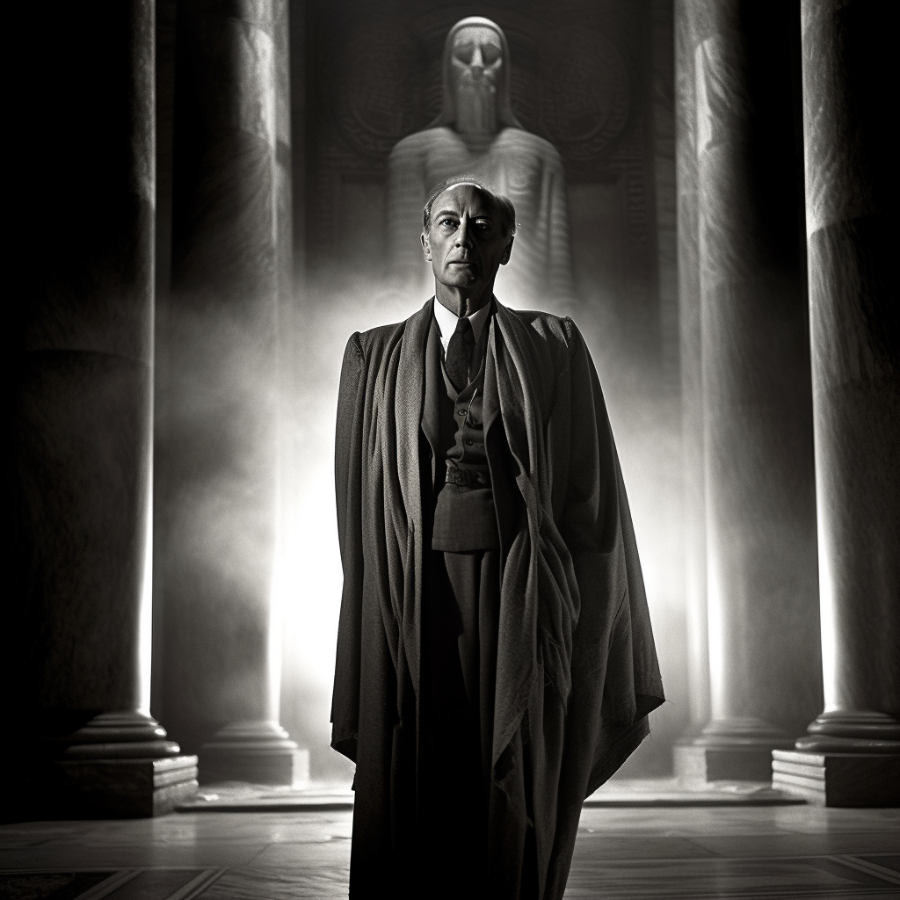Introduction
The concept of group dynamics and social control has been a recurring theme in human history. Occult magic, for instance, often employs these elements to enforce loyalty and obedience among its practitioners (Webb, 1974). Interestingly, we can also observe similar group dynamics and social control mechanisms in modern society, where organizations, religions, and political parties play a role in upholding norms and values, while encouraging conformity and obedience (Asch, 1951; Milgram, 1963). This article seeks to explore the significance of group dynamics and social control in both occult magic and contemporary social structures, and how these forces help maintain power and influence.
Occult Magic and Group Dynamics
Occult magic has long been associated with enigmatic rituals, secret societies, and hidden knowledge. According to Webb (1974), these practices often employ group dynamics, initiation rituals, and social hierarchies to instill a sense of loyalty and obedience in their members. For example, initiation rituals may involve intense emotional or physical experiences, which can create a strong bond between the initiate and the group, fostering feelings of belonging and allegiance (Turner, 1969). Similarly, social hierarchies within occult groups can create a sense of purpose and order, with members vying for status and recognition within the organization (Simmel, 1908).
Group Dynamics in Modern Society
In contemporary society, group dynamics and social control mechanisms are not limited to occult practices; they can be found in various aspects of our daily lives. Organizations, religions, and political parties all utilize these tactics to enforce conformity and obedience among their members (Asch, 1951; Milgram, 1963).
Asch’s (1951) seminal study on conformity demonstrated how individuals could be easily swayed by the majority opinion, even when they knew the majority was incorrect. This research highlights the power of group dynamics and the pressures to conform, suggesting that people are often more concerned with fitting in than with being right. Similarly, Milgram’s (1963) infamous study on obedience to authority showed that people were willing to inflict harm on others if instructed to do so by an authority figure. This experiment revealed the extent to which individuals might go to follow orders and adhere to social norms, even when these actions conflict with their personal beliefs and values.
Religions and political parties also rely on group dynamics to maintain their influence. These institutions often have strict hierarchies and codes of conduct, which create a sense of order and purpose for their members (Weber, 1922). Furthermore, rituals, symbols, and shared beliefs foster a sense of group identity, which can lead to a stronger adherence to the group’s norms and values (Durkheim, 1912).
The Role of Social Control in Upholding Power and Influence
Social control plays a critical role in maintaining the status quo and ensuring the continued influence of those in power (Foucault, 1977). Within occult practices and modern organizations alike, social control can take various forms, such as the use of rewards and punishments, the manipulation of information, and the maintenance of social hierarchies (Weber, 1922; Goffman, 1961).
In both occult magic and contemporary social structures, rewards and punishments can be used to encourage conformity and discourage dissent. For example, promotions or material benefits might be offered to those who adhere to the group’s norms and values, while social ostracism or other penalties could be imposed on those who deviate (Weber, 1922; Goffman, 1961).
The manipulation of information is another means of exerting social control. This can involve the selective dissemination of information, the suppression of dissenting opinions, or the propagation of misinformation to maintain a particular narrative or worldview (Lasswell, 1927; Chomsky & Herman, 1988). In occult magic, this might manifest as the concealment of esoteric knowledge or the manipulation of beliefs to maintain the group’s mystique and allure (Webb, 1974). In modern organizations, this can be seen in the control of media, public relations campaigns, or political propaganda aimed at shaping public opinion and maintaining the status quo (Chomsky & Herman, 1988).
Social hierarchies also play a crucial role in maintaining social control. In both occult magic and contemporary social structures, the existence of a hierarchy allows for the establishment of authority and the allocation of power and resources (Simmel, 1908; Weber, 1922). This creates a sense of order and stability within the group, as well as a clear chain of command that members can follow. Furthermore, social hierarchies can foster competition and ambition among members, motivating them to adhere to the group’s norms and values in pursuit of higher status and influence (Simmel, 1908).
The Interplay of Group Dynamics and Social Control
The relationship between group dynamics and social control is a complex and multifaceted one. Group dynamics can shape and reinforce social control mechanisms, while social control can influence and perpetuate group dynamics (Asch, 1951; Milgram, 1963). For example, the pressure to conform within a group can lead individuals to accept and internalize the group’s norms and values, making them more susceptible to the influence of social control mechanisms (Asch, 1951). On the other hand, the presence of social control can create an environment in which group dynamics flourish, as individuals are motivated to adhere to the group’s norms and values in order to gain rewards, avoid punishments, and maintain their social standing (Milgram, 1963).
Conclusion
Group dynamics and social control are intertwined forces that have been employed throughout human history to maintain power and influence, both within the realm of occult magic and in contemporary social structures. Through the use of initiation rituals, social hierarchies, and conformity, groups can foster loyalty and obedience among their members. Similarly, social control mechanisms such as rewards and punishments, information manipulation, and social hierarchies can be used to enforce norms and values and ensure the continued influence of those in power. By understanding these forces and their interplay, we can gain valuable insights into the nature of power and influence in both the esoteric world of occult magic and the broader context of modern society.
References
Asch, S. E. (1951). Effects of group pressure upon the modification and distortion of judgments. In H. Guetzkow (Ed.), Groups, leadership and men (pp. 177-190). Pittsburgh, PA: Carnegie Press.
Chomsky, N., & Herman, E. S. (1988). Manufacturing consent: The political economy of the mass media. New York, NY: Pantheon Books.
Durkheim, E. (1912). The elementary forms of religious life. New York, NY: Free Press.
Foucault, M. (1977). Discipline and punish: The birth of the prison. New York, NY: Vintage Books.
Goffman, E. (1961). Asylums: Essays on the social situation of mental patients and other inmates. Garden City, NY: Anchor Books.
Lasswell, H. D. (1927). Propaganda technique in the world war. New York, NY: Peter Smith.
Milgram, S. (1963). Behavioral study of obedience. Journal of Abnormal and Social Psychology, 67(4), 371-378.
Simmel, G. (1908). Soziologie: Untersuchungen über die Formen der Vergesellschaftung. Leipzig, Germany: Duncker & Humblot.
Turner, V. (1969). The ritual process: Structure and anti-structure. Chicago, IL: Aldine Publishing.
Weber, M. (1922). Economy and society: An outline of interpretive sociology. Berkeley, CA: University of California Press.
Webb, J. (1974). The occult establishment. La Salle, IL: Open Court Publishing Company.




